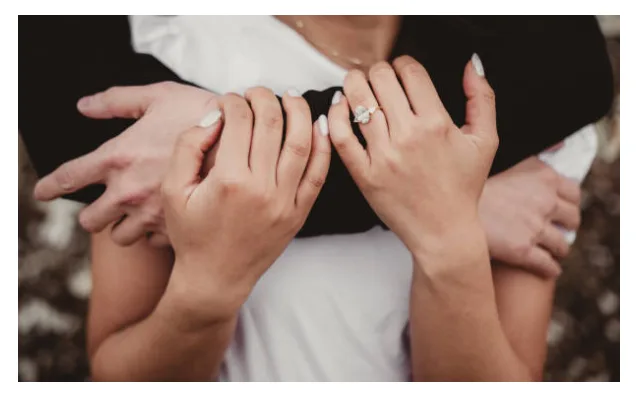Wedding Dresses: The Ultimate Symbol of Love and Elegance

A wedding dress is more than just a garment—it’s the heart of a bride’s big day, a reflection of her personality, and a timeless symbol of love and celebration. For centuries, wedding dresses have represented joy, beauty, and tradition, evolving with the changing tides of fashion while maintaining their enduring emotional significance. Whether classic or contemporary, every wedding dress tells a story—one of romance, individuality, and dreams fulfilled.
A Journey Through Time: The History of Wedding Dresses
The tradition of wearing a special dress for one’s wedding dates back thousands of years, but the white wedding dress as we know it today became popular after Queen Victoria’s wedding in 1840. Her choice of a white lace gown set a new trend, symbolizing purity and elegance.
Since then, wedding dresses have evolved through countless fashion eras. The 1920s brought flapper-style gowns with intricate beading, the 1950s introduced voluminous skirts and nipped waists, and the 1990s saw sleek satin designs inspired by minimalism. Today, brides have an endless array of styles to choose from, each blending tradition with modern trends.
Styles That Define Bridal Fashion
Wedding dresses come in countless silhouettes, each designed to highlight different features and express unique styles. Understanding these shapes can help brides find the one that truly feels like “the dress.”
- Ball Gown: Known for its full skirt and fitted bodice, this classic style is ideal for brides seeking a fairytale look.
- A-Line: Universally flattering, it gently flares from the waist, creating a soft, balanced silhouette.
- Mermaid: A glamorous choice that hugs the body through the hips before dramatically flaring out near the knees.
- Sheath: Simple and elegant, it skims the body’s natural lines for a modern, minimalist appeal.
- Tea-Length: Playful and vintage-inspired, this shorter style is perfect for intimate or outdoor weddings.
Each silhouette offers something special—romance, sophistication, or modern charm—allowing brides to express their individuality on their wedding day.
The Role of Fabric and Detail
Fabric plays a vital role in the look and feel of a wedding dress. Luxurious materials such as silk, satin, lace, organza, chiffon, and tulle each convey different moods and aesthetics.
- Silk exudes timeless luxury and elegance.
- Lace adds romance, texture, and vintage charm.
- Tulle brings dreamy volume to ball gowns and veils.
- Chiffon offers a lightweight, ethereal look, perfect for beach or destination weddings.
Equally important are the embellishments. Beading, embroidery, pearls, sequins, and hand-applied lace transform a simple dress into a masterpiece. These details reflect artistry and craftsmanship—key elements that make a gown truly special.
Modern Trends in Wedding Dresses
While timeless classics will always have a place, modern brides are embracing fresh and exciting trends. Some of the most popular wedding dress trends today include:
- Minimalist Chic: Clean lines, subtle tailoring, and sleek fabrics for a sophisticated, contemporary look.
- Off-the-Shoulder Styles: Romantic necklines that combine modesty and allure.
- Detachable Overskirts: Offering brides two looks in one—dramatic for the ceremony, practical for the reception.
- Colored Dresses: Soft hues like blush, champagne, and even pale blue are gaining popularity among modern brides.
- Sustainable Bridal Fashion: Eco-conscious brides are opting for ethically made gowns or reusing vintage dresses.
These trends show that bridal fashion continues to evolve, celebrating creativity and individuality.
The Emotional Experience of Choosing a Wedding Dress
Shopping for a wedding dress is often one of the most memorable experiences in a bride’s journey. From the first fitting to the final alteration, it’s a process filled with excitement, anticipation, and emotion.
Most brides spend months researching styles, visiting boutiques, and trying on gowns until they find “the one.” The moment a bride sees herself in her perfect dress often brings tears of joy — a realization that her dream is coming to life.
Bridal consultants and stylists play an important role in this process, guiding brides with expertise, patience, and warmth. Their goal is not just to find a dress but to help create an unforgettable memory.
Cultural and Personal Expression
Wedding dresses also hold deep cultural meaning. Around the world, brides incorporate traditional elements into their gowns—whether it’s intricate embroidery, symbolic colors, or heritage-inspired fabrics. In some cultures, red or gold dresses symbolize prosperity and joy, while in Western traditions, white remains the dominant choice.
This blend of tradition and personal style allows brides to create a gown that not only celebrates their culture but also reflects their individuality.
Caring for Your Wedding Dress
After the big day, preserving your wedding dress is essential for keeping its beauty intact. Professional cleaning and preservation ensure that delicate fabrics and embellishments remain pristine. Many brides choose to pass their gown down as a cherished heirloom or transform it into a new design, extending its legacy of love.
The Everlasting Charm of the Wedding Dress
A wedding dress is far more than just attire—it’s a story woven in fabric, thread, and emotion. It embodies joy, confidence, and the promise of a beautiful future. Whether handcrafted by a designer or found in a cozy boutique, the right dress captures the essence of who a bride is and the love she celebrates.
From timeless classics to daring contemporary designs, wedding dresses continue to symbolize one universal truth: every love story deserves a beautiful beginning. And for every bride, that story begins the moment she finds her perfect dress — the one that makes her feel radiant, confident, and truly unforgettable.
